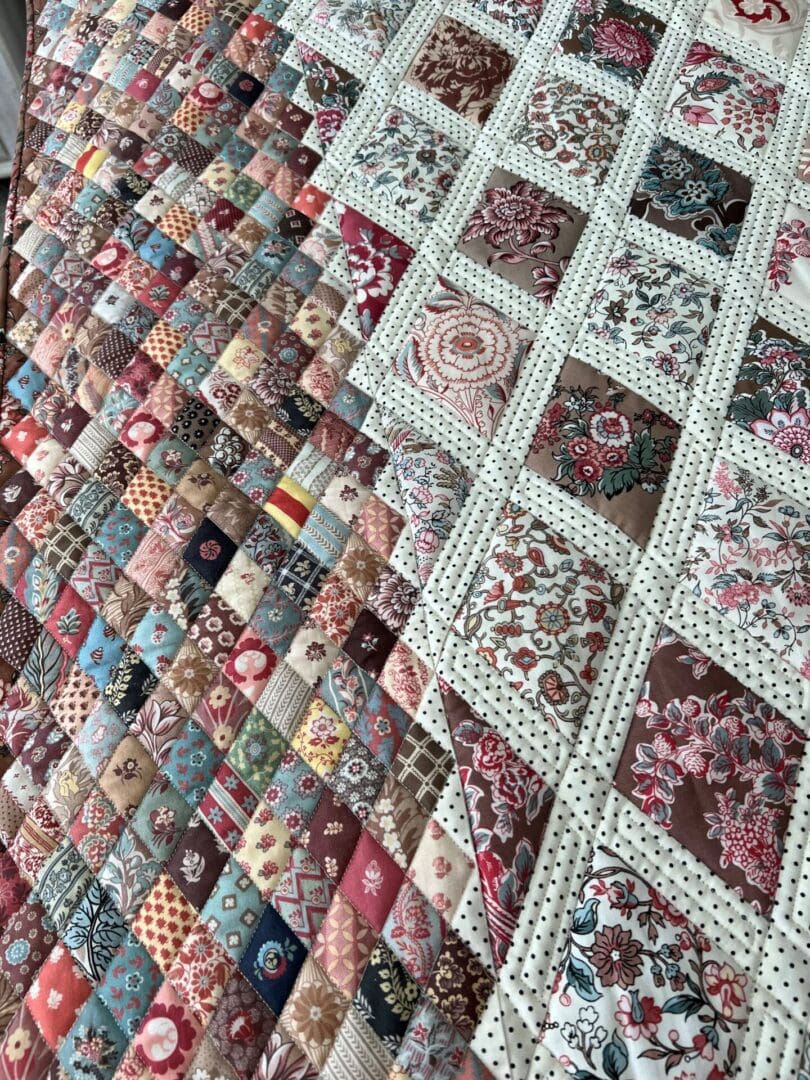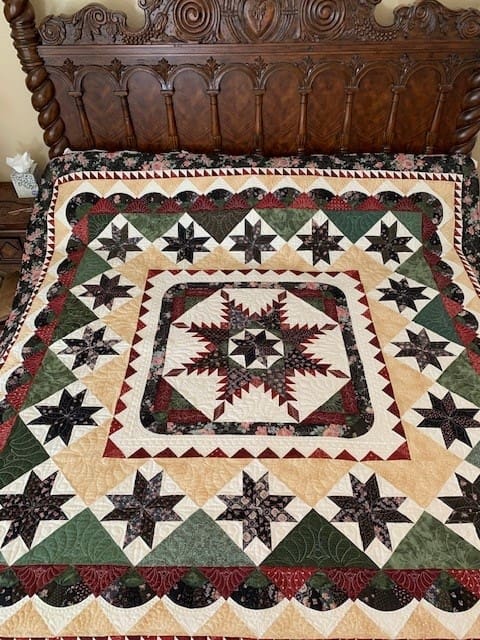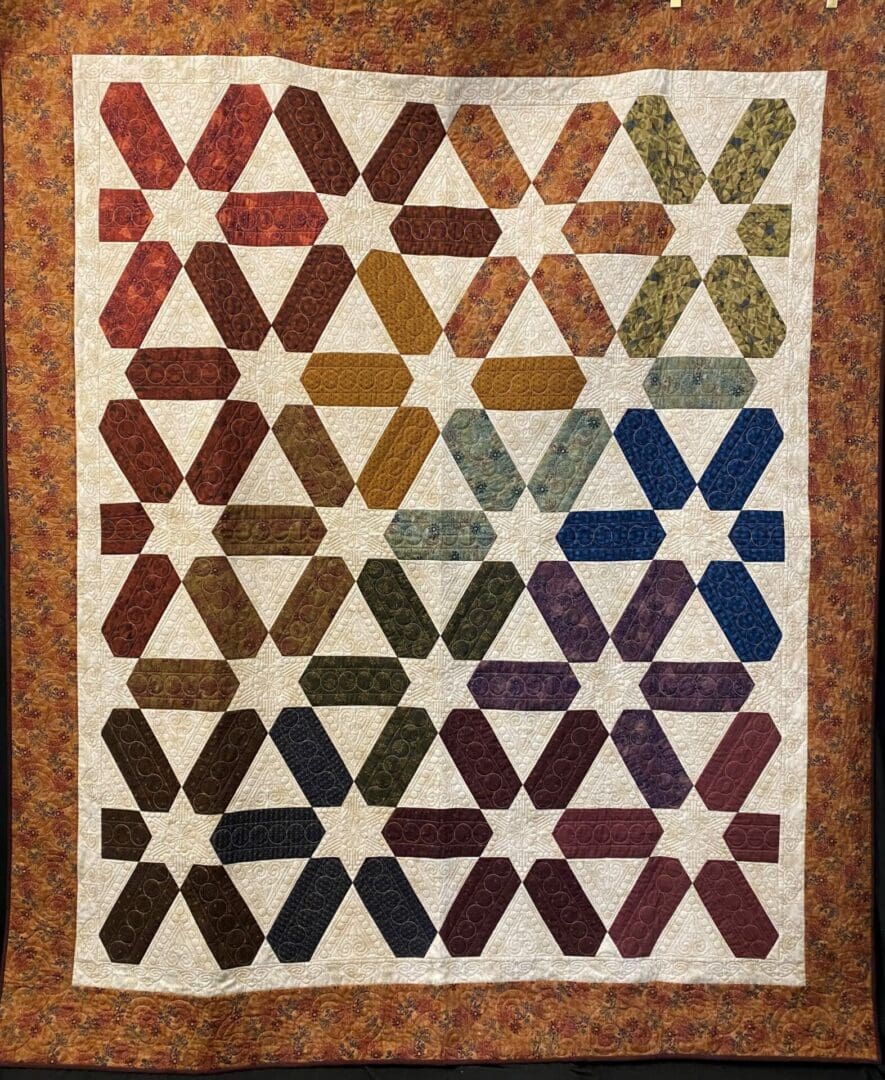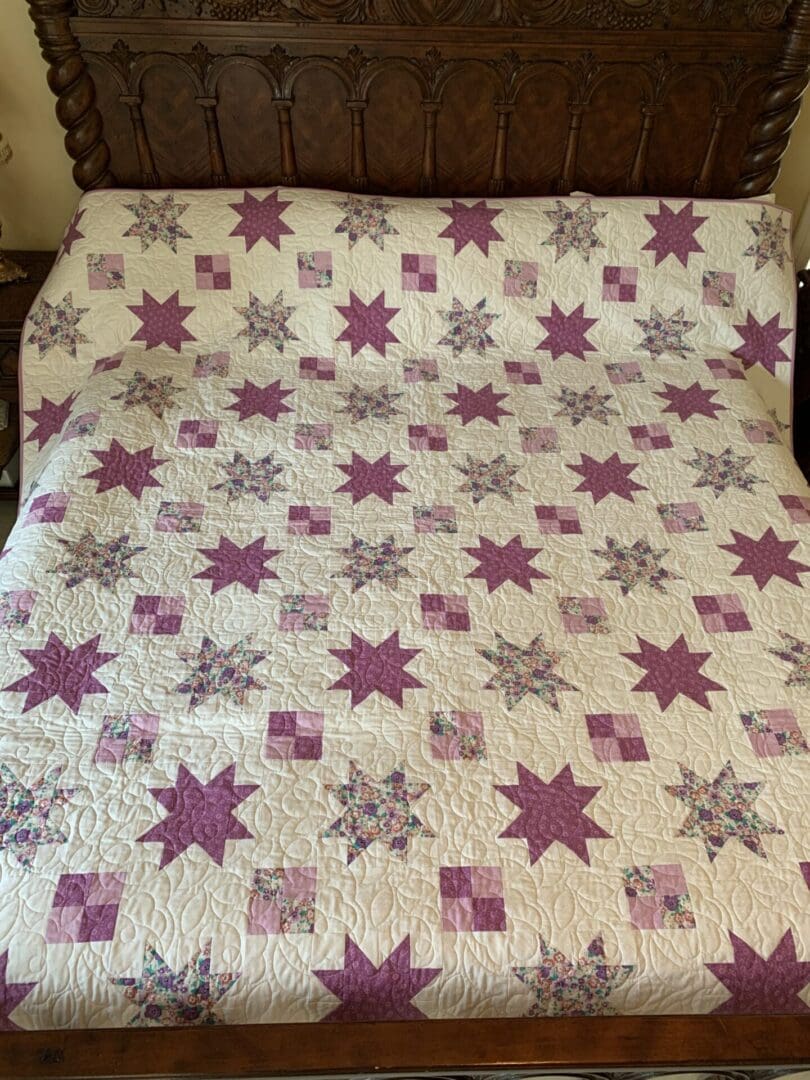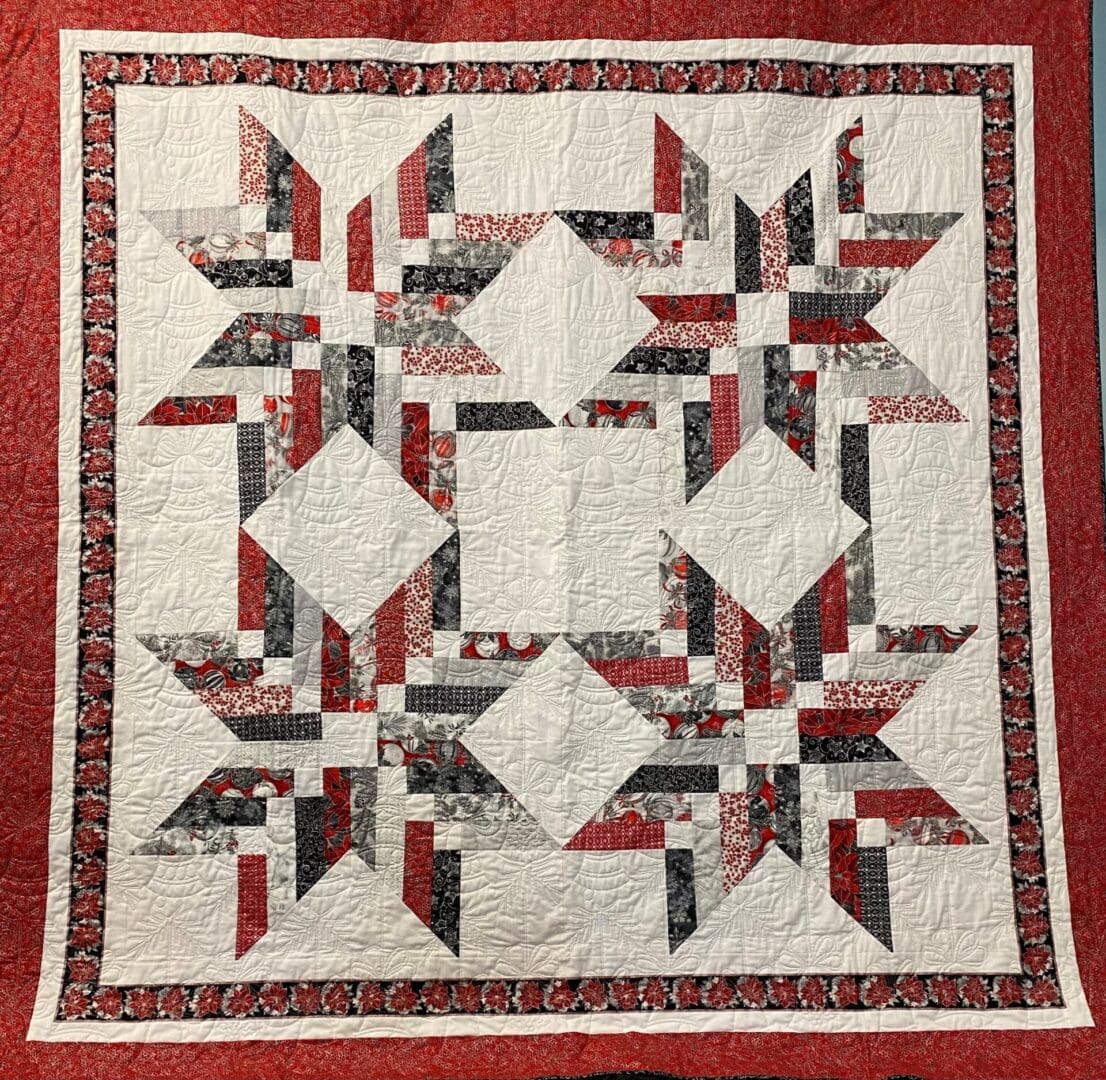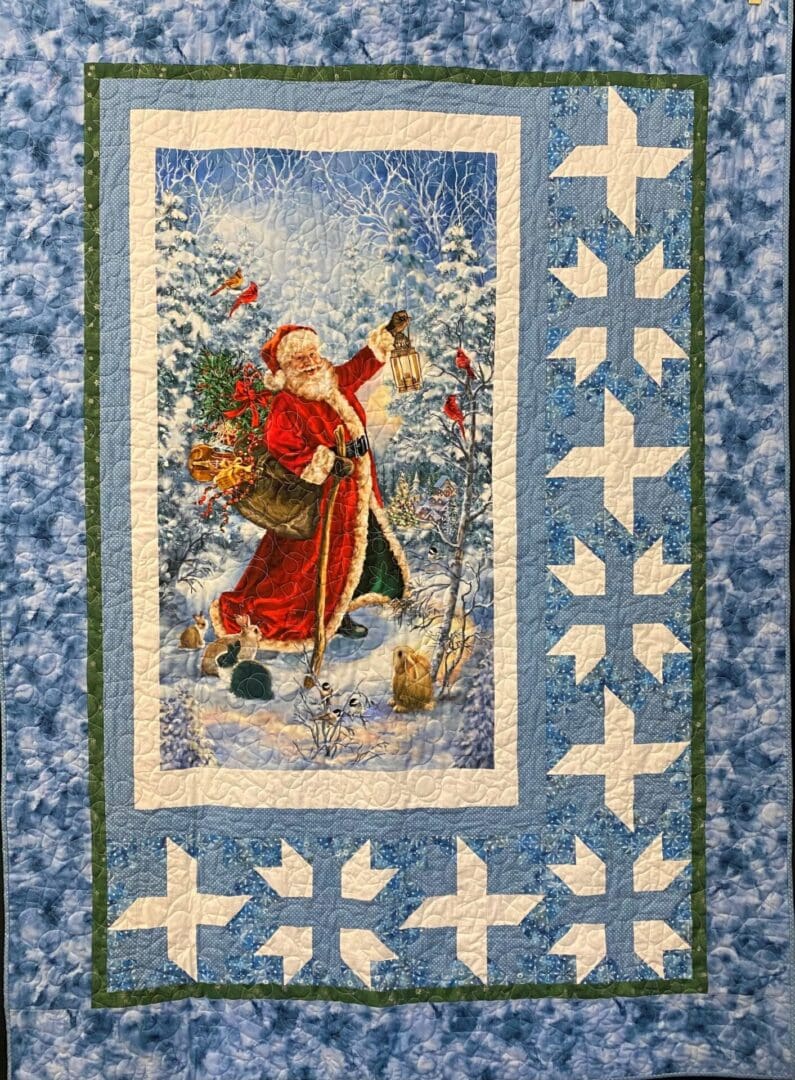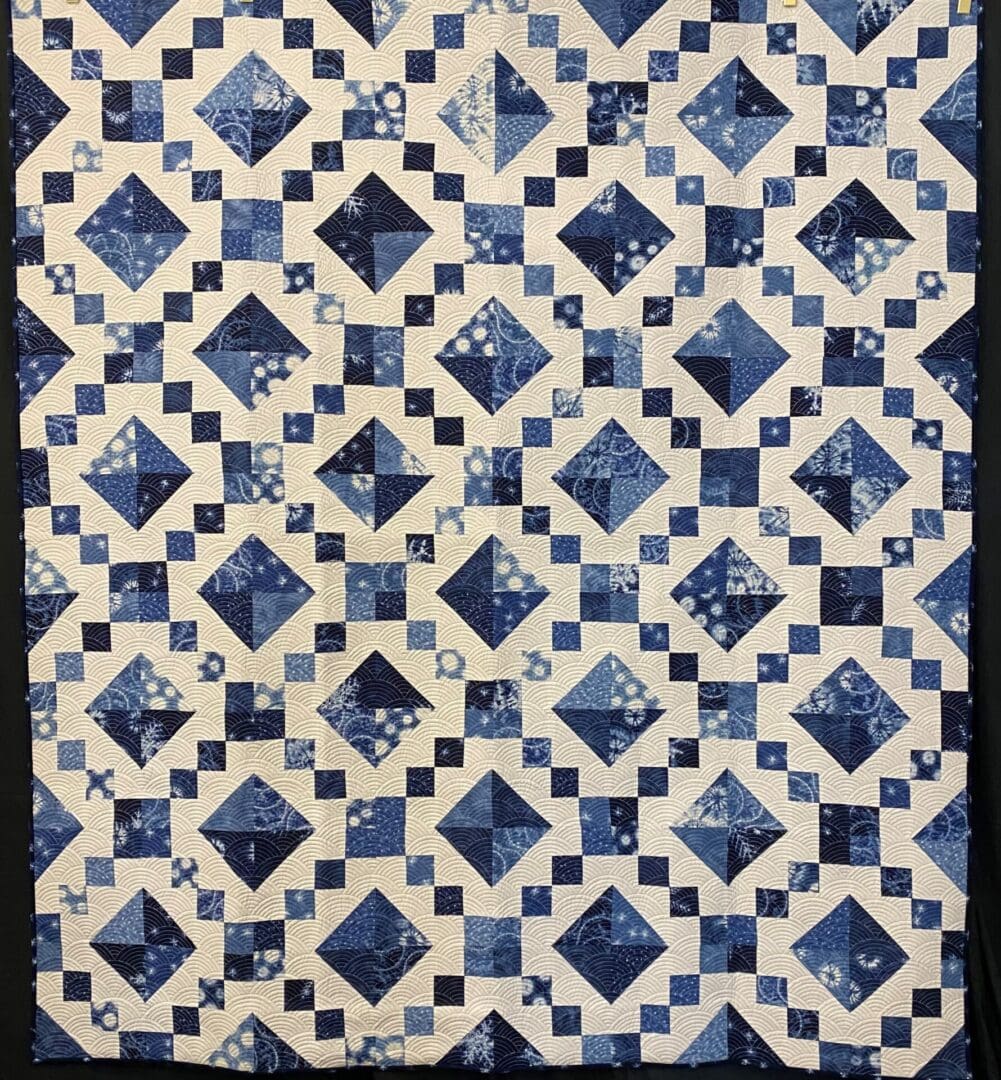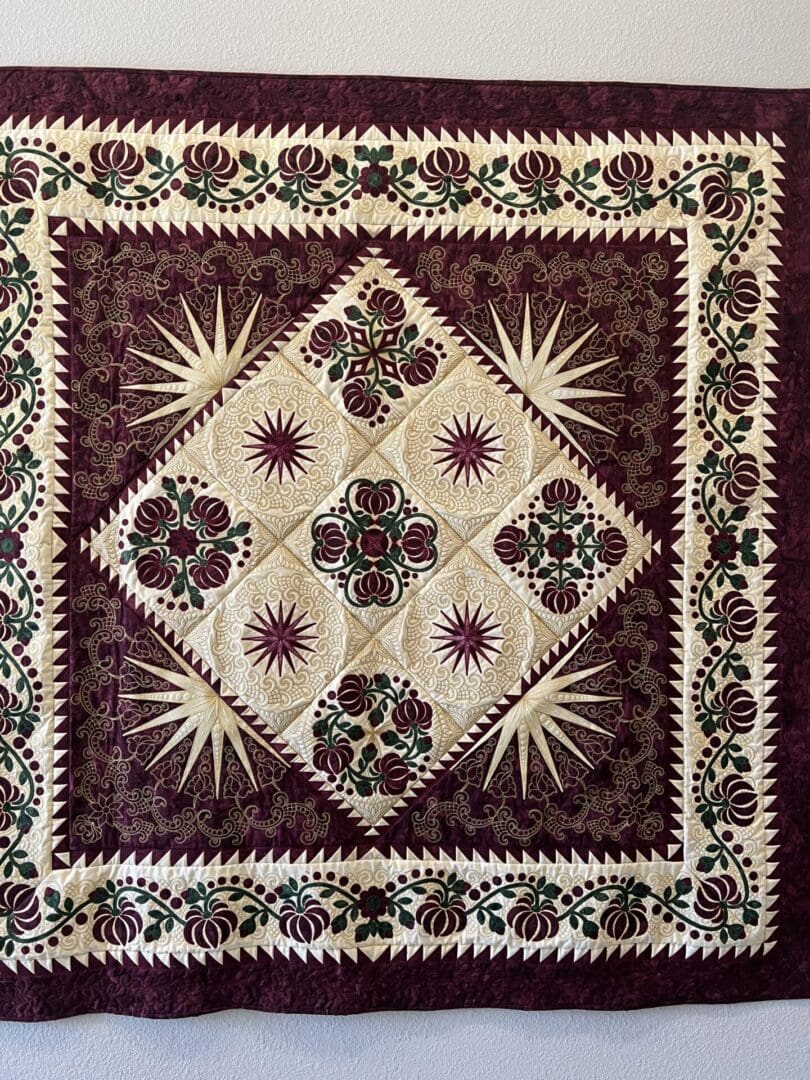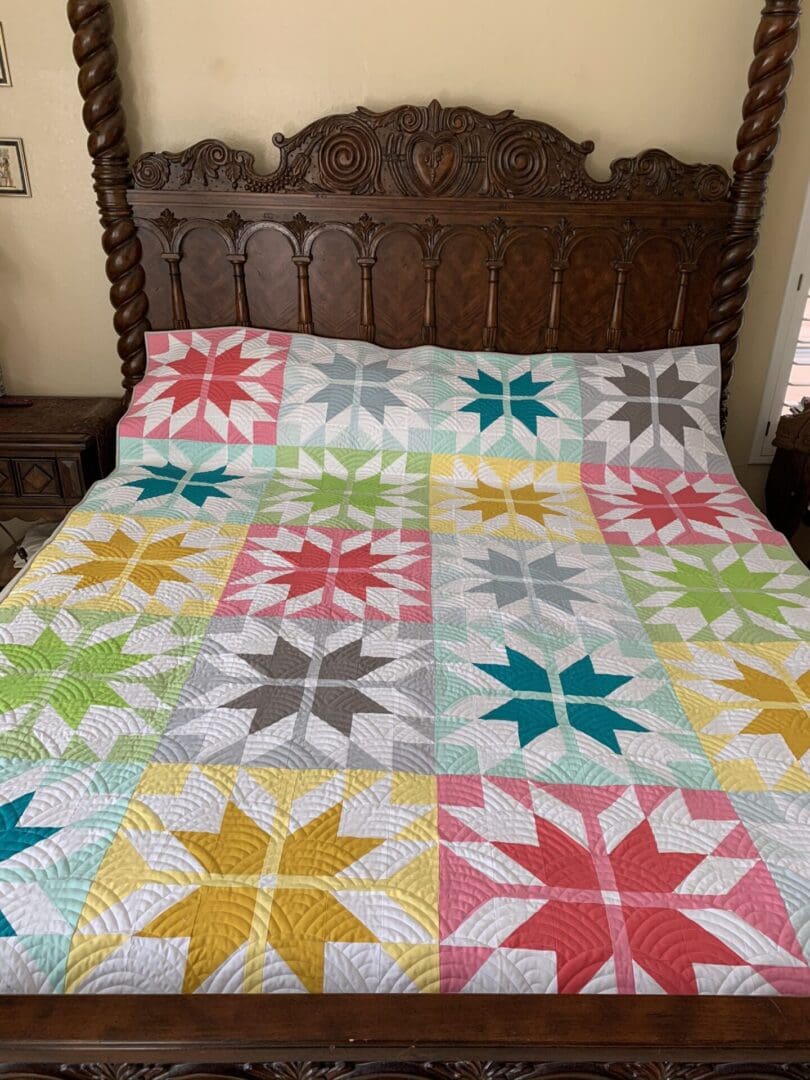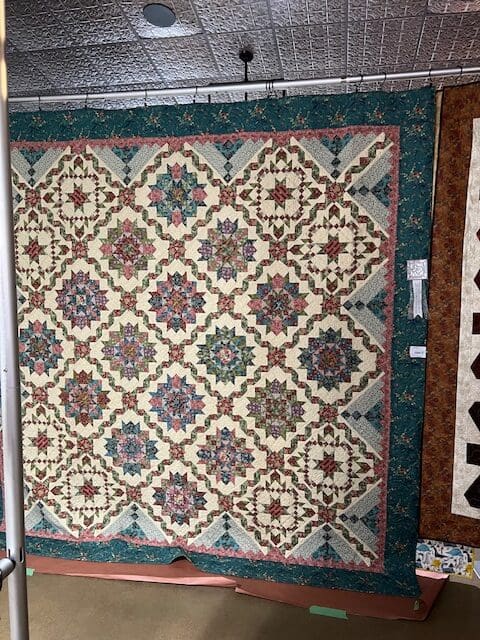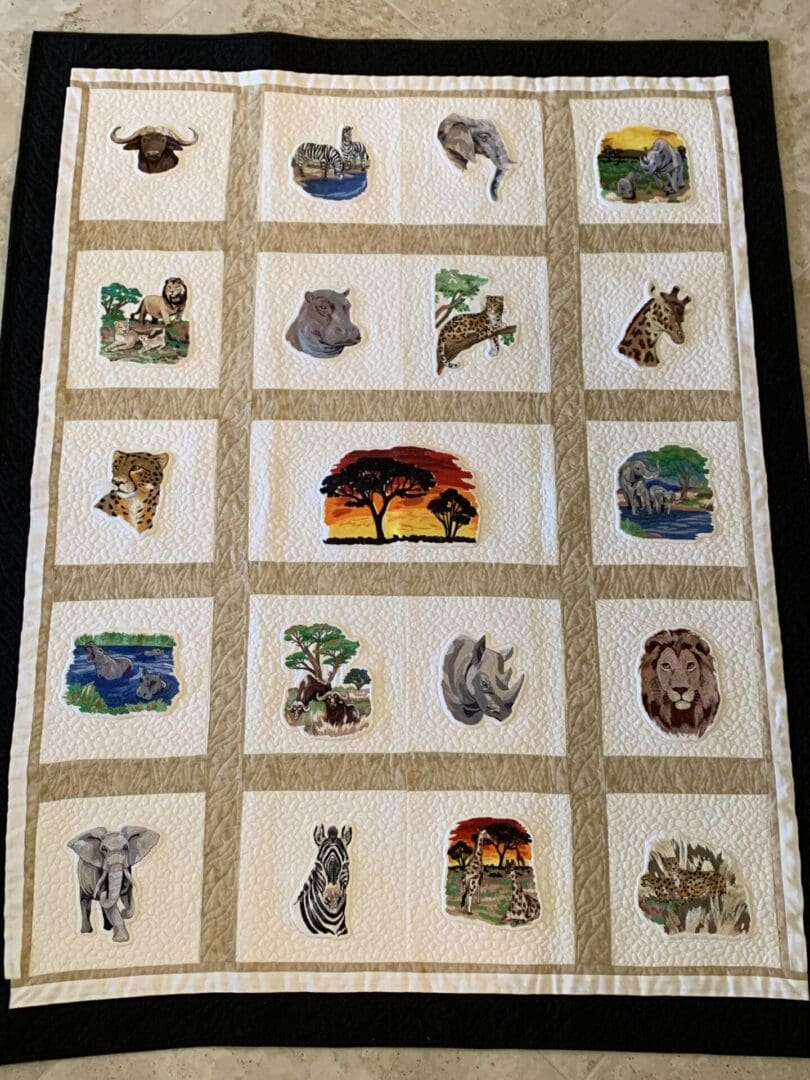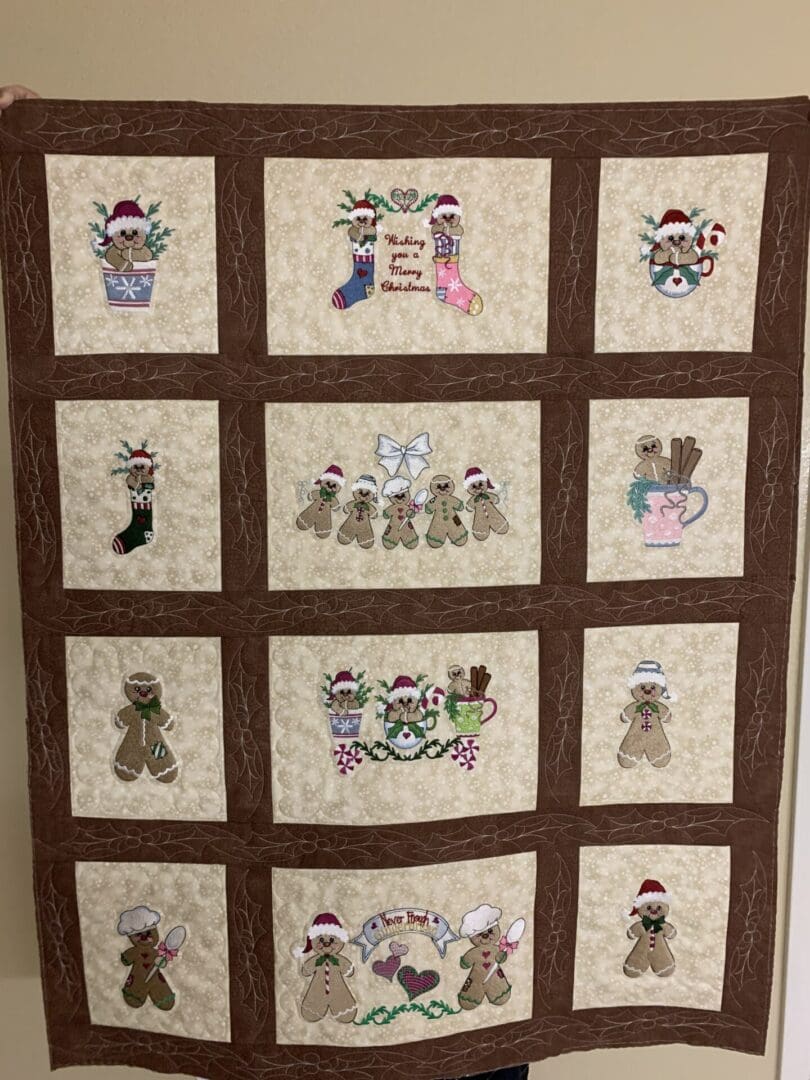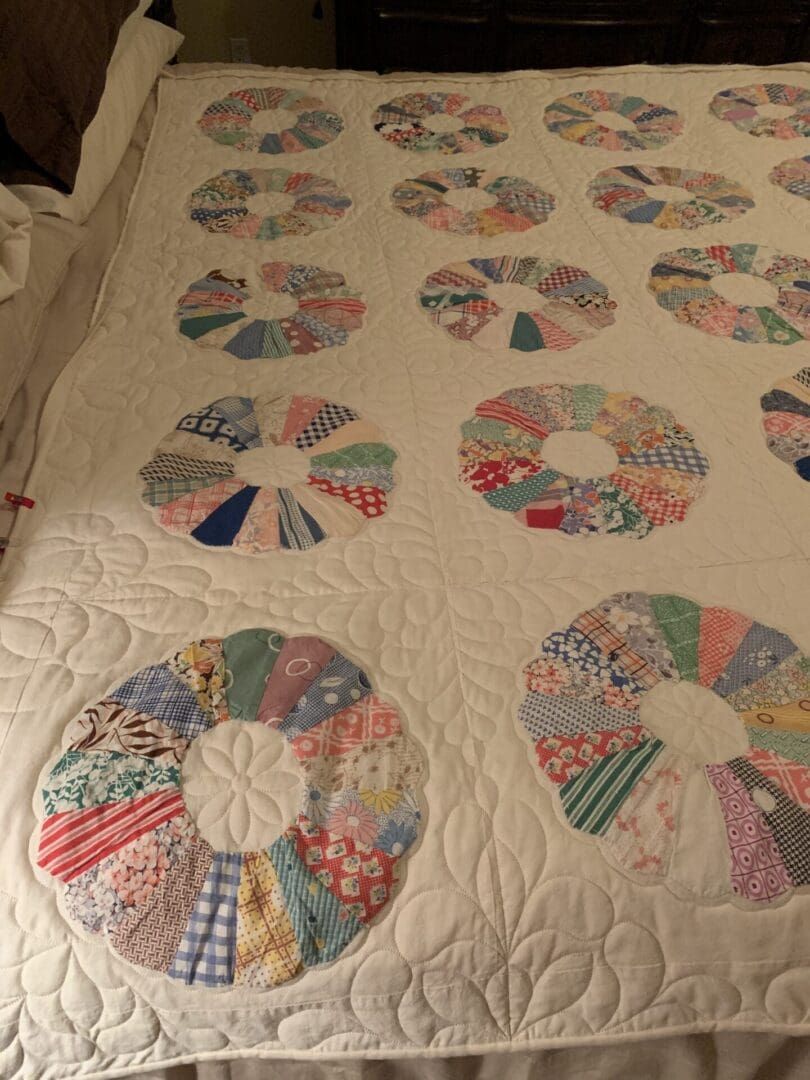
Frequently Asked Questions
Machine quilting has come a long way since I first started. It was a laborious and cumbersome process of moving all three layers through my stationary domestic sewing machine. Now I use a long-arm machine. A long-arm machine moves the sewing head instead of the fabric. The sewing machine has a large throat and rides on tracks so it can be moved forward, backward and side-to-side in any direction by guiding it from either the front or the back of the machine. A series of rollers are used to hold the lining, batting, and top fabric over a wide stand on which the sewing mechanism freely moves. Once the exposed fabric surface is quilted (up to approximately 24 square feet per pass on our machine), all three fabric layers are advanced simultaneously revealing the next area to be quilted.
A “Computer Guided System” is a feature added to a long-arm quilting machine that has hardware, a computer, and software which will guide the sewing head making it possible to precisely execute a wide variety of patterns from simple to intricate over and over again. Our computer guided system is the “Statler Stitcher™”
The "Statler Stitcher™" is a software program with hardware designed and built to operate a hand-guided quilting machine. The program can determine the pattern size, the size of the block, the stitches per inch, the repetitions of the pattern, and the offset of the pattern. The hardware includes the computer, cables, servo-motors, and computer circuit boards attached to a hand-guided sewing head, which is guided by the computer instead of by hand.
A computer guided system offers certain features:
- Patterns are precise in every stitch, and can be accurately and uniformly repeated.
- Each pattern can be modified or customized to make each creation one-of-a-kind.
- Intricate patterns such as those that might be used for heirloom work can be stitched beautifully even by a beginner.
- The computer can automatically resize or modify digitized designs to stretch or maintain proportions.
- Patterns can be rotated to fit any direction in the quilt.
- Designs can be positioned by the center, corners, start of pattern, etc.
- Designs can be tested first by “sewing” with the needle off and using a laser light to see exactly where the design will go.
- With a pen attached to the back, the machine can be set to draw a pattern on tissue paper; the drawing can be placed over a quilt to help in decisions about pattern design and placement.
- Drive Belts can easily be disconnected to still allow hand guiding when desired.
- New designs can be digitized and existing designs can be modified using Auto Sketch software, and then a design may be easily tested before use.
Our current time in the studio until your quilt is ready to be picked up or shipped out is about two to four weeks. If our turn-around time is likely to exceed four weeks we will let you know when you can expect it or you may contact us anytime to see exactly when you may expect it to be completed based on our current work load.
Types of quilting can include an overall pattern on the whole quilt (also known as Edge-to-Edge, or E2E), an overall pattern in the center of the quilt plus a border pattern(s) in the border(s) or custom quilting where patterns are placed in specific blocks, borders, sashing, etc.
Edge to Edge (E2E) - Overall patterns are frequently used when:
- The quilt will be used heavily or washed frequently
- Fabrics are so busy or so interesting that they are the main feature and it would be hard to see the quilting no matter what pattern and thread is used.
- A special theme that may or may not be in the fabrics is desired.
- The piecer wants to draw less attention to the piecing.
- Quilting needs to be done quicker (close time deadline.)
- The budget for quilting is minimal or the customer just want to spend less.
Custom quilting:
- Allows for a different type of creativity (patterns can be matched to blocks or other specific shapes / places, names, sayings or other text can be part of the quilting, different thread colors can be used in specific places, etc.)
- Can highlight the piecing of the quilt (but can also draw more attention to less accurate piecing)
- Can use coordinating patterns in borders, blocks, etc.
- Is often (but not always) more densely quilted
- Usually gives more of the “heirloom” look
- Is more time intensive to pick patterns, to stitch, etc. thus, more of an investment
- How will the quilt be used: decorative, functional, heirloom, etc.
- Who will the end user be? Do they have any preferences or special interests?
- Scale of piecing: large, medium, small
- Motifs or designs in the fabric
- Degree of motion or busy-ness
- Theme or Style
When piecing, we recommend you use the same fiber thread as the quilt fabric so that they will wear the same. When we quilt, either cotton, polyester, or some specialty threads can be used. Polyester or specialty threads often add strength and sheen and come in a wider variety of colors. Natural fiber threads are also popular. They create softer stitches and have little give or stretch. Cotton Thread will wear and fade at much like cotton fabric while Polyester thread color will tend to hold its color longer.
There are many factors to consider which can help you make a wise choice.
- How will the quilt be used? For show, as a wall hanging, by a baby or child, by a family with pets, or as a home decor item versus a “blanket,”
- Is it likely to need frequent washing?
- How much puffiness and what kind of drape versus stiffness will you want the quilt to have?
- Do you need a flame retardant fiber as one might for a baby or child’s quilt?
- Do you need a natural fiber such as cotton, wool, or silk?
- How warm will the quilt need to be?
- Price may be another consideration.
- What color/s are your quilt top and backing? Will the color of batting that may show through the lighter fabrics look OK?
Both cotton and cotton/polyester blend battings are all-around good choices for many quilts. Polyester may be warmer and have more puffiness or texture. Wool is warm, light weight and adds a puffy texture like polyester. Wool also easily releases creases or wrinkles making it a good choice if you intend to enter a quilt to in a show or competition. There are flame retardant battings and newer battings made from eco-friendly materials. Standard batting colors are white, natural, and black although some battings are other colors depending on what they are made from. Occasionally fabrics such as cotton flannel or polar fleece are used as batting, especially when you want a flatter look or lighter weight.
We are happy to help you select batting that will meet your needs.
YES, pieced backs can be used and may be quite attractive; however, when a quilt is finished on a longarm machine, it is possible to center the back ONLY ONE WAY due to the way the quilt is mounted and rolled it as it is quilted. For more detail about Quilt Backs click here.
We recommend you choose a fabric with the same fiber content as the top of your quilt so all fabrics will wear evenly. Either natural or synthetic fabrics work well for a quilt back. Some other considerations for the back of your quilt: If seams are required, consider the bulk and stretchiness of the fabric. Although every precaution is taken, tucks or puckering may occur during quilting on fleece, Minkee or other stretchy fabrics. Mounting stretchy fabrics with the selvage edge perpendicular to the pick-up roller on the machine helps reduce stretching, so plan accordingly if the back requires seams to make it large enough to mount length-wise on the machine.
Choosing your backing fabric is a matter of creative taste, just like the quilt you have created. Some prefer to use a print which hides stitching and any tie-off knots. Others prefer to choose a fabric that will showcase the stitching on the back in effect making your quilt “reversible.” If you want stitching to show on the back for a “reversible quilt,” think about thread colors that will work well on both front and back.


